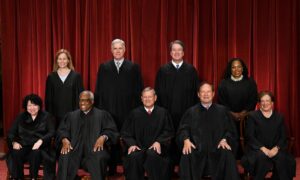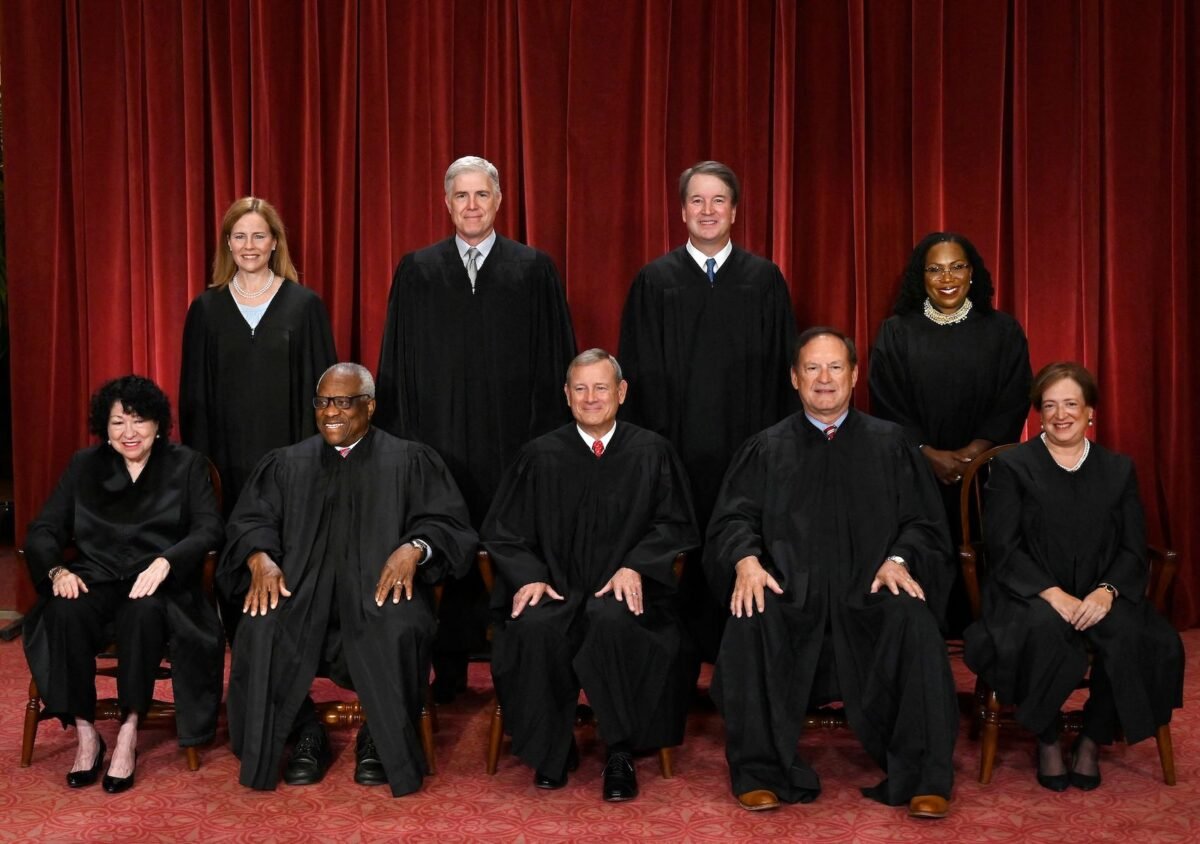Justice Ketanji Jackson’s Claim in Supreme Court Case Comes Under Fire

An attorney who was involved in the Supreme Court’s recent landmark affirmative action case responded to a claim made by Justice Ketanji Brown Jackson in her dissent in which she stated that black newborn babies are more likely to die if they aren’t treated by a black physician.
In her dissent, Ms. Jackson sought to show that race-based admissions can be a matter of life-or-death for minority groups in the Supreme Court’s ruling on Students for Fair Admissions v. Harvard, in which the majority ruled to end affirmative action in college admissions.
“For high-risk black newborns, having a black physician more than doubles the likelihood that the baby will live and not die,” Ms. Jackson wrote as an example.
Her claim came from an amicus brief that was filed by lawyers that represented a group of medical colleges. It cited a 2020 study that looked at mortality rates for Florida newborns between 1992 and 2015.
However, that claim was strongly criticized by Ted Frank, a senior attorney with the Hamilton Lincoln Law Institute, who claimed it was mathematically impossible.
“A moment’s thought should be enough to realize that this claim is wildly implausible,” wrote Frank in a Wall Street Journal opinion article, who filed an amicus brief in support of Students for Fair Admissions. “Imagine if 40 percent of black newborns died—thousands of dead infants every week. But even so, that’s a 60 percent survival rate, which is mathematically impossible to double. And the actual survival rate is over 99 percent. How could Justice Jackson make such an innumerate mistake?”
Mr. Frank asserted that the cited study “makes no such claims” and instead “examines mortality rates in Florida newborns between 1992 and 2015 and shows” a 0.13 percent to 0.2 improvement in survival rates “for black newborns with black pediatricians. There was “though no statistically significant improvement for black obstetricians,” he wrote.
The amicus brief filed by the Association of American Medical Colleges ” either misunderstood the paper or invented the statistic,” he wrote, adding that the study appears to be flawed, too.
“There, the most highly specified model still shows an improvement in black newborn survival,” Mr. Frank wrote. “But if you know how to read the numbers—the authors don’t say it—it also shows black doctors with a statistically significant higher mortality rate for white newborns, and a higher mortality rate overall, all else being equal.”
Meanwhile, the Norton Rose Fulbright law firm issued a filing to the Supreme Court docket (pdf) and wrote that Ms. Jackson’s argument about black newborn mortality rates “warrants clarification” and wanted to clear up “confusion.”
“The principal cited finding of the [study] was that the mortality rate for black newborns, as compared to white newborns, decreased by more than half when under the supervision of [a] Black physician,” the law firm’s letter wrote. “In absolute terms, this study found that patient-physician racial concordance led to a reduction in health inequity.”
That letter also said that survival and mortality might be opposites, while decreased mortality often indicates a higher rate of survival. Statistically, they are not interchangeable,” the law firm said. “Thus, the statement in the [amicus brief] warrants clarification.”
And Jonathan Turley, a law professor at George Washington University and opinion writer for multiple news outlets, wrote a blog post last week that he believes Ms. Jackson’s argument may have been due to a glut of advocacy groups filing numerous amicus briefs in supporting one side against the other in major Supreme Court cases.
“My opposition to the brief is that the justices are in a poor position to judge the veracity or accuracy of such studies,” Mr. Turley wrote. “They simply pick and choose between rivaling studies to claim a definitive factual foundation for an opinion.
Turley also wrote: “When you are before the Supreme Court, everyone is free to just dump statistics and studies into the record, and the court regularly uses such material to determine the outcome.”
Ruling and Outcome
In the majority’s ruling against the universities’ policies, Chief Justice John Roberts argued that a student should be treated as “an individual” and not as part of a collective group such as a race. Instead of focusing on an individual’s merits, universities have done the opposite, Roberts added.
“And in doing so, they have concluded, wrongly, that the touchstone of an individual’s identity is not [challenging] bested, skills built, or lessons learned but the color of their skin. Our constitutional history does not tolerate that choice,” Mr. Roberts argued, while that the two colleges “lack sufficiently focused and measurable objectives warranting the use of race, unavoidably employ race in a negative manner, involve racial stereotyping, and lack meaningful end points.”
Justices Clarence Thomas, Samuel Alito, Neil Gorsuch, Brett Kavanaugh, and Amy Coney Barrett joined Roberts in the majority. Justices Sonia Sotomayor, Elena Kagan, and Jackson dissented, with Sotomayor alleging that the majority’s ruling would “[entrench] racial inequality” for decades to come in the United States.




